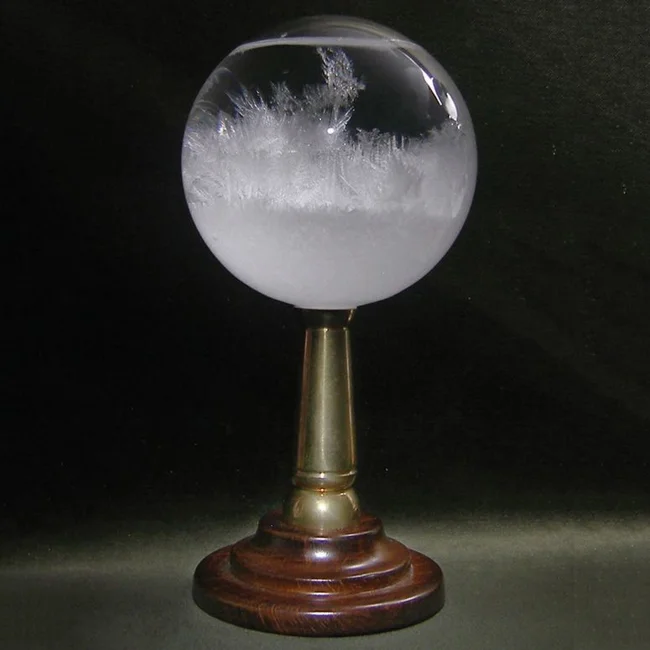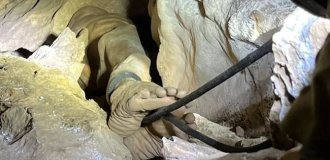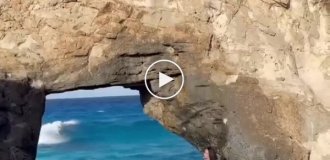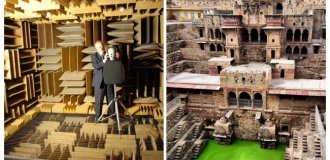Stormglass - what is it? (10 photos)
- A hurricane? - Glenarvan asked John Mangles briefly.
- Not yet, but it is close, - the captain answered.
The captain gave the order to Austin and the boatswain to prepare to meet the approaching hurricane
The barometer fell to twenty-six inches: a rare occurrence. The storm glass showed a storm...
Jules Verne "The Children of Captain Grant". 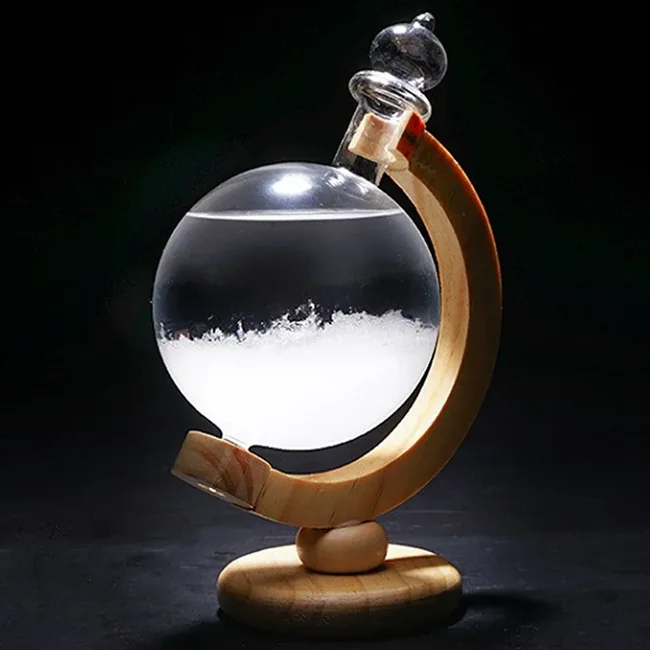
Stormglass
Stormglass - storm flask. The name of the inventor of this device remains unknown. But sailors willingly used it for many decades. An expert on this device was Admiral R. Fitzroy, the famous captain of the Beagle. 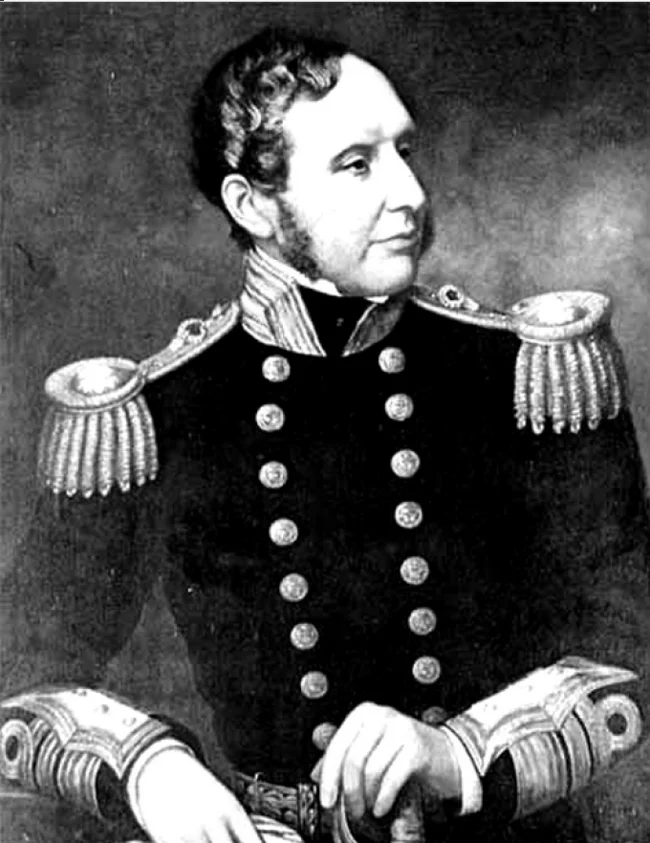
Robert FitzRoy (1805–1865), Admiral of the British Navy, meteorologist, founder and head of the Meteorological Department
In 1831–1836, Robert FitzRoy, being captain of the brig Beagle, led the famous round-the-world voyage, in which Charles Darwin also took part. The admiral was not only an outstanding hydrographer, but also the founder of synoptic meteorology
and weather service. Reflecting on forecasts, he could not help but be interested in storm glass. He
reports some of his observations, which are now difficult to understand without synoptic charts. But there is also general information, very interesting. At the beginning of the 19th century, the device was sold in London under the name of looking glass; it differed significantly in sensitivity among different manufacturers; it was assumed that the dynamics of crystal formation was somehow connected with atmospheric electricity. In this regard, the admiral even consulted with M. Faraday. The admiral observed the behavior of the storm glass for many years. It seems fair that the device is often called the "Fitzroy flask". 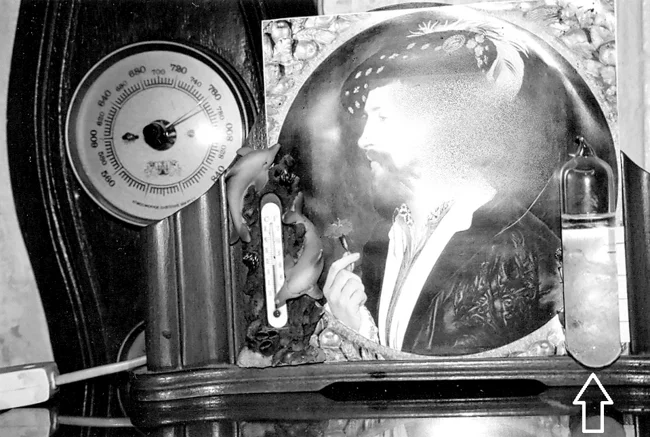
General view of the storm glass - Fitzroy flask 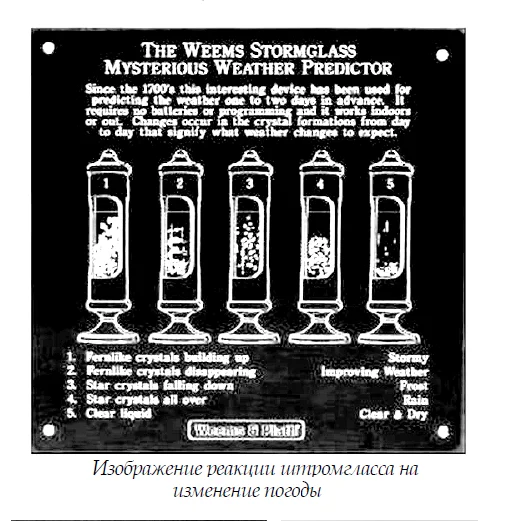
Here is what the magazine "Meteorological Magazine" wrote about the storm glass in the thirties.
The 1934 issue of the magazine contains an article entitled "The Storm Glass and Weather", in which the author (D. L. Champion) recalls that his father made a series of observations with this instrument in 1891.
The author writes: "As it is rare to see sketches of the crystals formed
in this curious instrument, I have included some for September 1891, thinking that they may be of interest. The forms assumed by the crystals from day to day are clearly visible; and the curves are given for the changes in pressure, temperature, humidity, amount of precipitation, and the direction and strength of the wind... The storm glass seemed to be more active during strong winds from the southwest quadrant and with positive and negative
pressure changes. Changes in temperature and humidity apparently have little effect on the device." 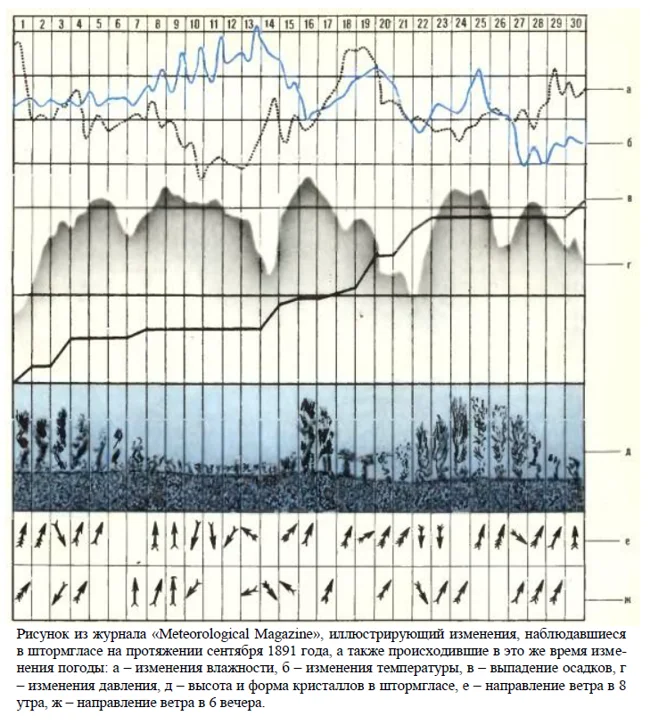
A description of the storm glass is also in the book by A. Delenius "30,000 newest discoveries, recipes, generally useful practical information and modern research on all knowledge developed by modern sciences and arts..." (1885).
Here is how Delenius describes these changes: "A transparent liquid foretells clear weather, a cloudy one - rain. A cloudy liquid with small stars - a thunderstorm. Small dots - fog, damp weather. Large flakes, for winter - snow, in summer - a covered sky, heavy air. Threads in the upper
part of the liquid - wind. Crystals at the bottom - thick air, frost and winter. Small stars - in winter, in clear weather - snow on the second or third day. The higher the crystals rise in winter
, the stronger the cold will be. The composition of the liquid filling the storm glass includes vodka, camphor, saltpeter and ammonia. 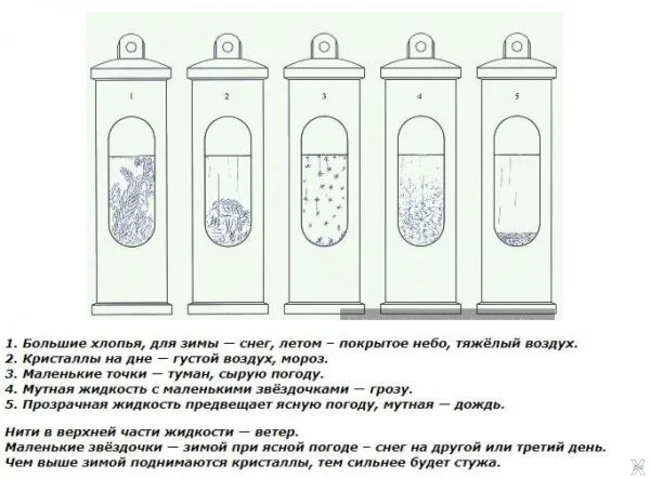
Only what affects the storm glass remains a mystery. The flask is sealed hermetically - atmospheric pressure disappears. The outside temperature too. It is still not entirely clear how it works. 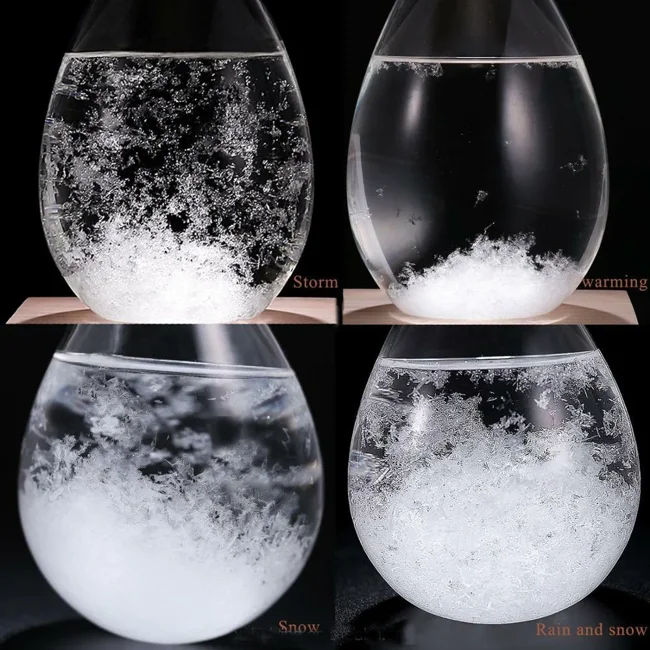
Various forms of crystals
In the early 1990s, a group of Crimean researchers - V.P. Shcherbakov, V.Ya. Narmansky, V.S. Martynyuk - implemented a special research program to reconstruct the technology of manufacturing storm glass. Systematic regular observations began in August 1995 in the village of Nauchny (Crimean Astrophysical Observatory). From the beginning, observations were conducted with one device, since October 2003 - with three. 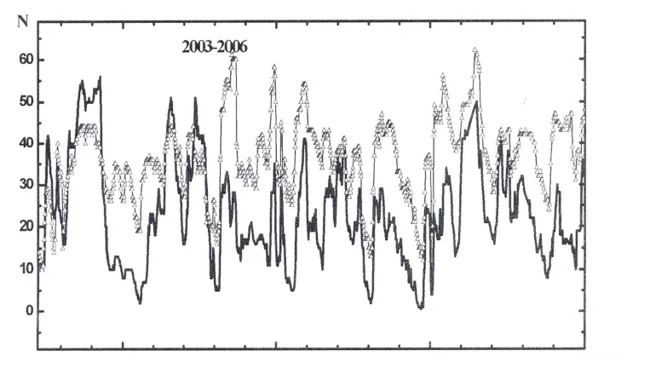
In two devices separated by a distance, the daily indicators change synchronously 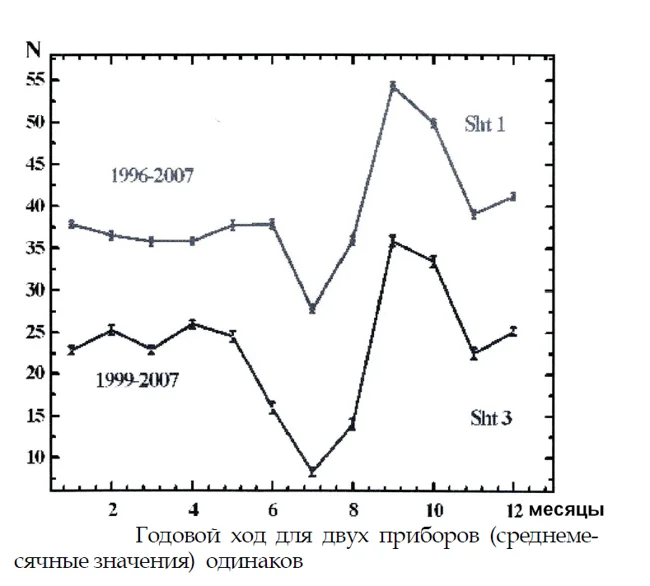
If we now bring together all those observations of the storm glass that are scattered in the literature, and
add to them the data of experiments and monitoring of recent years, then - using one indicator - the intensity of crystal formation! - the following picture arises:
The device is affected by external influences;
The geometric dimensions of the flask, its shape do not have a noticeable effect on sensitivity;
The dynamics of the indicator under consideration are affected by both meteorological processes and
space weather. As for ordinary ("earthly") weather, various synoptic
situations affect the solution differently; intensive crystal formation precedes a sharp
drop in barometric pressure by about two days (while the effect of changes in the pressure itself is reliably excluded).
Stormglass is an indicator device for "ordinary" and space weather. The impact of space weather affects the dynamics of a wide variety of physical and chemical processes. Historically, it (stormglass) did not attract serious attention for a long time. 